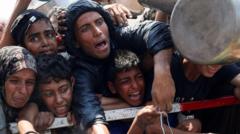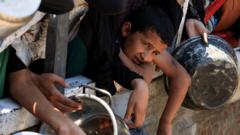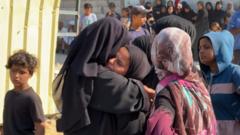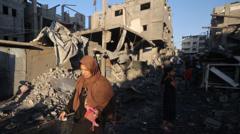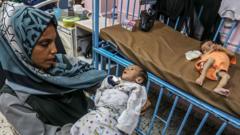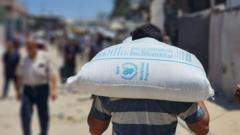The GHF is distributing food aid boxes in Gaza, but experts critique their nutritional value amidst the region's starvation crisis. While these boxes provide necessary calories, they lack essential nutrients, raising concerns for long-term health.
Nutritional Crisis: What's Inside the GHF Food Aid Boxes Distributed in Gaza?
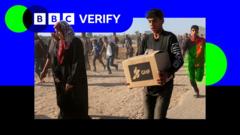
Nutritional Crisis: What's Inside the GHF Food Aid Boxes Distributed in Gaza?
As Gaza confronts an escalating starvation crisis, the contents of aid boxes distributed by the Gaza Humanitarian Foundation (GHF) reveal serious nutritional shortcomings.
The humanitarian situation in Gaza continues to worsen, with over two million individuals facing starvation, as reported by the United Nations. The Gaza Humanitarian Foundation (GHF), supported by Israel and the US, has been active in the region since May, claiming to have distributed 91 million meals primarily in food box form. Although international journalists are barred from entering Gaza, BBC Verify has analyzed information and images from the GHF and consulted with aid experts regarding the boxes’ nutritional value.
The contents of the GHF food boxes have recently surfaced online, showing mainly dried food items that require water and fuel for cooking, such as pasta, chickpeas, lentils, and wheat flour. These also include cooking oil, salt, and tahini, along with some ready-to-eat items like halva bars. According to GHF, a typical box contains 42,500 calories and is designed to feed 5.5 people for about three and a half days.
However, experts express concern over the nutritional adequacy of these boxes. Professor Stuart Gordon from the London School of Economics examined the provided list and noted that while the calorie count might be adequate to stave off immediate hunger, the diet lacks nutritional diversity. “This basket offers a full stomach but an empty diet,” he stated, warning that reliance on such food could lead to “hidden hunger,” escalating risks for diseases such as anemia and scurvy.
Dr. Andrew Seal, an international nutrition professor at University College London, also highlighted deficiencies in critical nutrients including calcium, iron, zinc, and vitamins essential for maintaining health. He pointed to the inadequacy for vulnerable groups like young children, who require targeted nutrition.
Moreover, Gaza's critical water and fuel shortages compound the issue; cooking the dry goods from the boxes is increasingly challenging. The UN's Office of Humanitarian Affairs reported that the situation is deteriorating rapidly, forcing families to resort to unsafe cooking methods. The World Food Programme indicates that cooking gas has become increasingly scarce and costly, with prices skyrocketing on the black market.
As malnutrition levels soar in Gaza, with numerous women and children in urgent need of treatment, the UN Secretary General António Guterres underscored the grave shortages of essential supplies facing the populace. Alarmingly, almost one in three individuals in Gaza is experiencing prolonged periods without food.
As the crisis unfolds, concerns regarding the adequacy of the aid being provided remain paramount, prompting questions about how these issues might be addressed moving forward.

